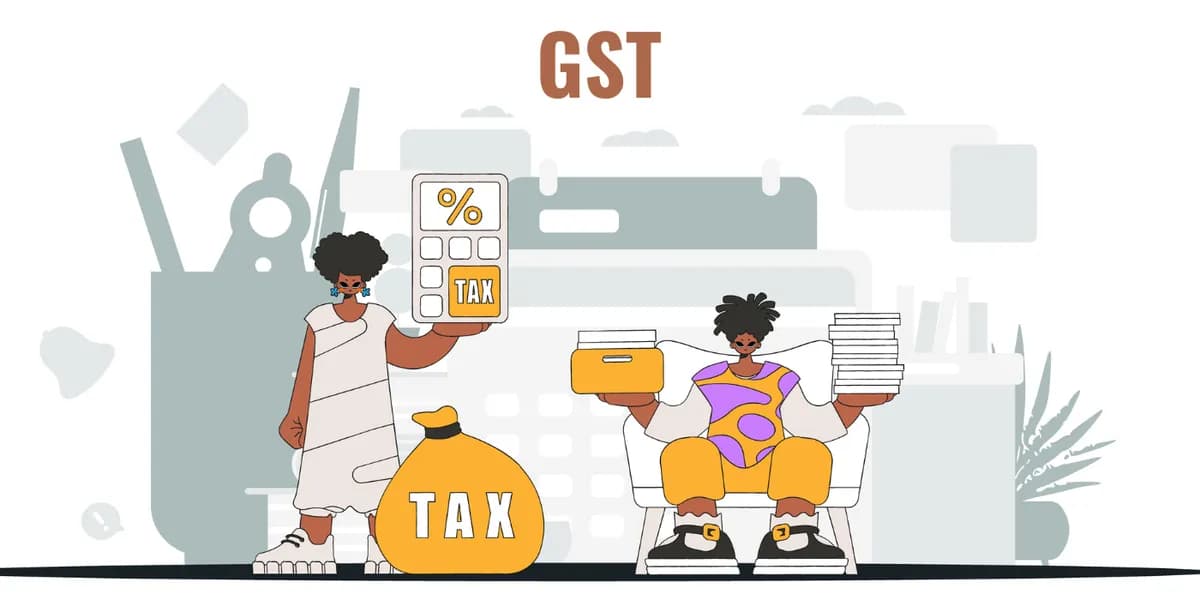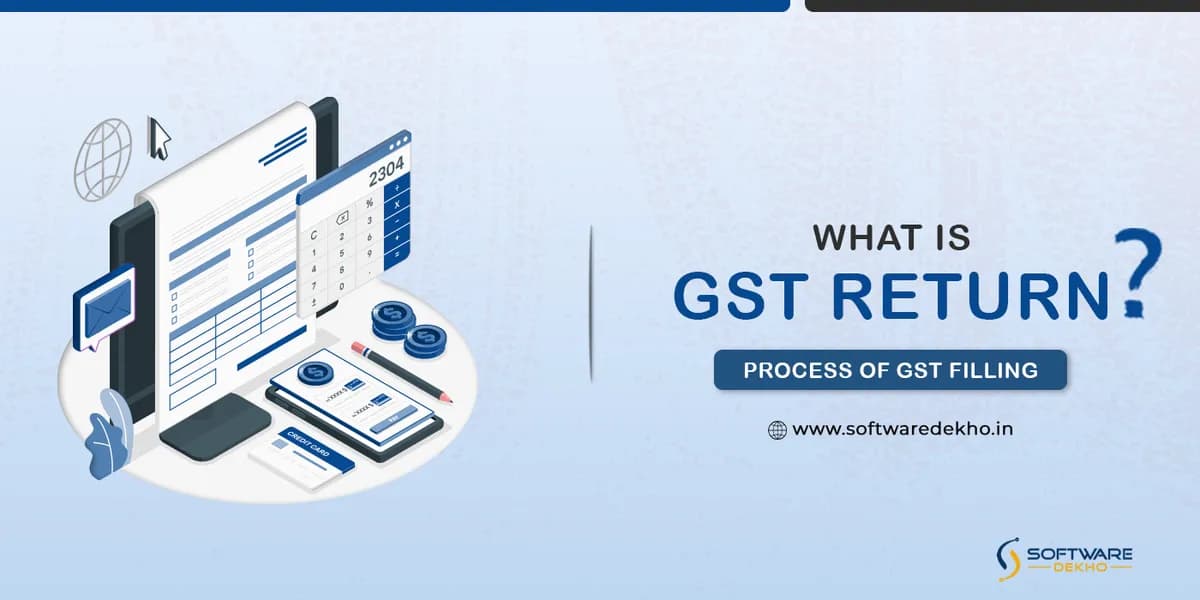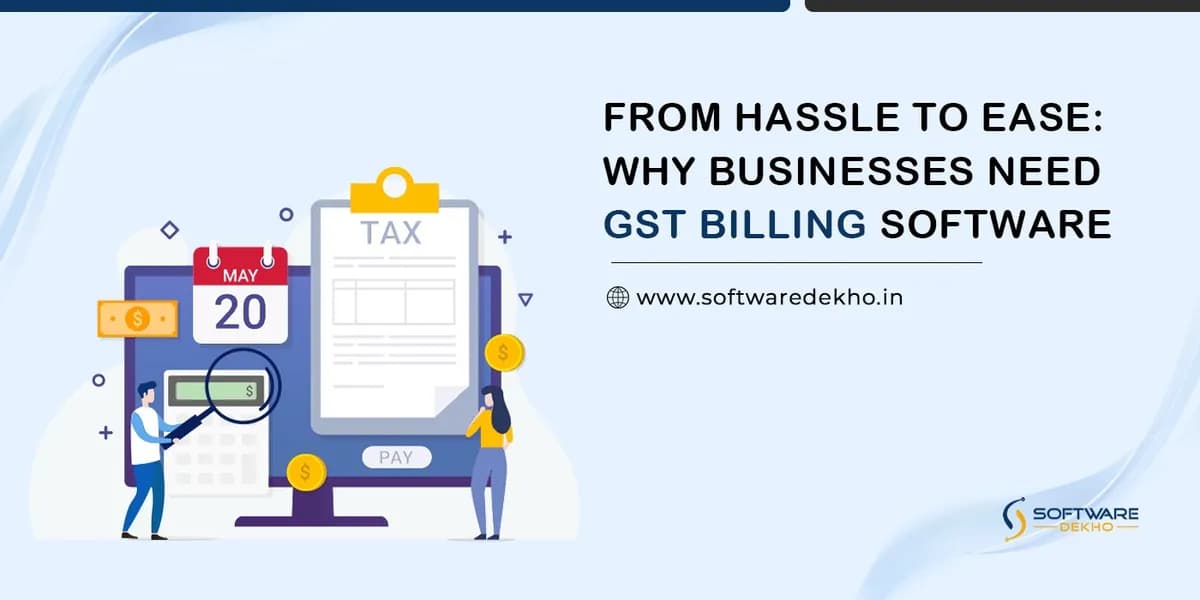What is the GST Return? Process of GST Filing
GST (Goods and Service Tax) compliance is an important part of running a business. Something that you shouldn’t miss here is the GST returns. What is GST returns and how do you file GST? Here is a step-wise guide on GST filing. It also describes the different types of GST returns based on business needs. Go ahead!
What is GST Returns?
GST returns are a way to report the tax liabilities to the Government of India. In simple terms, it is a document containing business transactions for a certain period.
Purpose of GST Returns
GST helps the Government and taxpayers in the following ways:
Assess Taxes: these returns analyse the details of sales and purchases made by a taxpayer. It can help the Government in knowing the GST liabilities of every taxpayer.
Tracking Compliance: The government can know if businesses are complying with GST regulations.
Refunds: businesses can claim input tax credits (ITC) on their purchases. Taxpayers can use GST returns to claim these refunds.
Types of GST Returns
Right now, there are different GST forms in India. However, some of these are view-only GST returns. The main types of GST return are:
Regular Returns:
GSTR - 1:
It reports all the outward sales and inward purchases for a month. It can vary monthly or quarterly based on turnover. Most registered businesses file these returns, usually on the 11th of the upcoming month.
GSTR - 3B:
It is also a monthly return that summarises the tax liability for the previous month. It is an important return for every business. GSTR-3 B is usually due by the 20th of the next month.
Specific Returns:
GSTR - 5:
It applies to non-resident taxpayers who make taxable supplies occasionally in India. GSTR-5 is due by the 20th day of the next month.
GSTR - 6:
It is used to report the input tax credit (ITC) among the units. Input Service Distributors (ISDs) file for this return before the 13th of the coming month.
GSTR - 7:
It is for those taxpayers who should deduct the TDS (tax deducted at source) under GST. GSTR-7 is expected before the 10th of next month.
GSTR - 8:
GSTR-8 is filed by e-commerce operators who collect tax on the goods sold through their platforms. Like GSTR-7, this type of return is also expected before the 10th of the following month.
Annual Returns:
GSTR - 9:
So far, it is the only GST return filed annually. Regular taxpayers file GSTR-9 before December 31st of the coming financial year. This GST return provides a summary of all the monthly & quarterly returns filed during the previous financial year.
Other Returns:
GSTR - 10:
GSTR-10 is the final return filed when a taxpayer’s GST return is canceled or surrendered.
GSTR - 2A and GSTR - 2B:
These are view-only GST returns. They reflect the information from a supplier’s GSTR-1 filings. These returns help you in reconciling your purchase records.
GSTR - 3, 4, 4A, 5A, 6A & 7A:
Some of these GST return forms existed previously, but they are now suspended. The others among these are not actively used in the GST filing system.

GST Filing Details
GST filing details cover the outward sales, inward purchases, and tax liabilities of a business. Each of these includes different details listed below:
Outward Sales:
Categorizes all sales of goods and services of the taxpayer during the period. It covers the following details:
HSN & SAC Codes:
These refer to the Harmonized System of Nomenclature (HSN) or Service Accounting Code (SAC). They categorise your supplied goods and services. You need to use the correct code for accurate filing.
Taxable Value:
It is the transaction value before applying GST or any discounts.
GST Rate:
The applicable GST rate, which is usually 5%, 12%, or 18%.
Applicable GST:
You’ll report the applicable GST among CGST, SGST, and IGST based on the nature of supply. You can use central (CGST) or state (SGST) components based on intra and inter-state supplies, or apply an integrated GST (IGST) on the entire value.
Inward Purchases:
Refers to all purchases of goods and services made by the taxpayer during the time. The details you need to include here for GST are:
Supplier’s GSTIN:
You should give the GST Identification Number of the supplier who provided the goods and services to you for purchase.
Invoice Details:
It covers the invoice number, date, and total purchase value. You need to add a reference to these in your GST filing.
Tax Claimed:
You should specify the ITC amount on eligible purchases. It reduces your overall tax liability.
Tax Calculation:
Based on the difference between sales and purchases, the return calculates the net tax payable or refundable.
Liability:
Subtract the ITC from the tax collected on outward sales. The reflected amount is the net tax payable.
Payment Methods:
You might need to provide details related to the payment of tax liability. You can include challan reference numbers, online payment gateways, etc.
Late Fees:
If there is any delay in filing the GST returns, you must pay any late fees associated with it.
Additional Details:
GST filing also includes some additional details like the following:
Exempt and Non-Taxables:
You must report the details of any supplies exempt from or non-taxables when filing GST returns. Also, include the items that are out of scope for GST.
Reverse Charge Mechanism:
You should include the relevant details if your company must pay GST under the RCM (reverse charge mechanism) for any purchases.
Tax Deductions:
If there is any tax deducted at source (TDS) or tax collected at source (TCS) based on GST regulations, you need to report those details too.
GST Filing Process
You can follow these steps if you want to file GST returns:
Gather Information:
Keep all the necessary information ready, before you start filing GST. It includes GST Identification Number, records related to outward sales and inward purchases, and details of exempt, nil and non-taxable supplies. Also collect information related to TDS and TCS, if any.
Identify the Form:
Identify the right GST form you should file. You can know this based on the type of your business, its turnover, etc. (Refer to the Types of GST forms above if you need more information).
GST Filing:
You are now ready with all the necessary information to file GST. Follow these steps to complete the GST filing process.
Step - 1:
Go to the official GST portal. Log in using your credentials.
Step - 2:
Find the ‘Returns’ section on the website. Now, select the right GST return form from the list.
Step - 3:
Carefully enter all the required details related to your sales, SAC/HSN codes, values, and GST rates. You can find these details under the outward sales information that you prepared earlier.
Step - 4:
Continue by entering the details related to the inward purchases. Here you need to enter your supplier’s GSTIN, invoice details, and ITC claims.
Step - 5:
The system will now calculate your net tax liability. It is the difference between the tax collected on sales and ITC claimed on purchases.
Step - 6:
Also enter any additional details required for GST filing, like exempt, non-taxable supplies, and TDS/TCS taken.
Step - 7:
Review all the information that you entered for accuracy. After that, submit your GST return.
Step - 8:
After submitting the GST return successfully, pay the net tax liable (if any) through any of the available payment options on the GST portal. If you make the payment through the online portal, it shows a successful payment against your return.
Processing and Verification:
The GST portal processes your filed return. It validates the information with the data from your suppliers’ GSTR filings. If there is any discrepancy, you need to provide more clarification or revise your return.
ITC Crediting:
The input tax credit (ITC) on your inward purchases is reflected after successful processing. You can find it in your electronic credit ledger. You can use this ITC to pay tax liabilities in future.
Refunds:
You might get a refund from the Government if your ITC claim exceeds your tax liability. Refunds are processed based on the amount, correctness of documents, etc.
In some cases, the GST department can select your return for further verification. It can be anything like clarification on certain transactions, asking for additional documents, etc.
Understanding the required details and different GSTR forms is essential to file your GST return accurately. You might sometimes end up paying penalties in case of any errors during filing. Timely and accurate GST filing can help you avoid such fees.
You must conduct thorough research and read user reviews to choose the best software for your needs. So, take a look at our website to understand better!
Let's Talk about Software!






